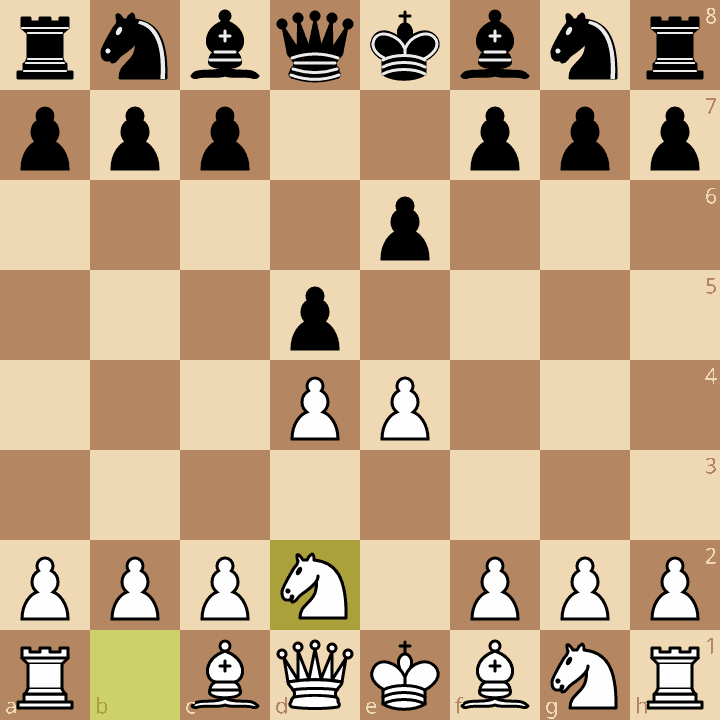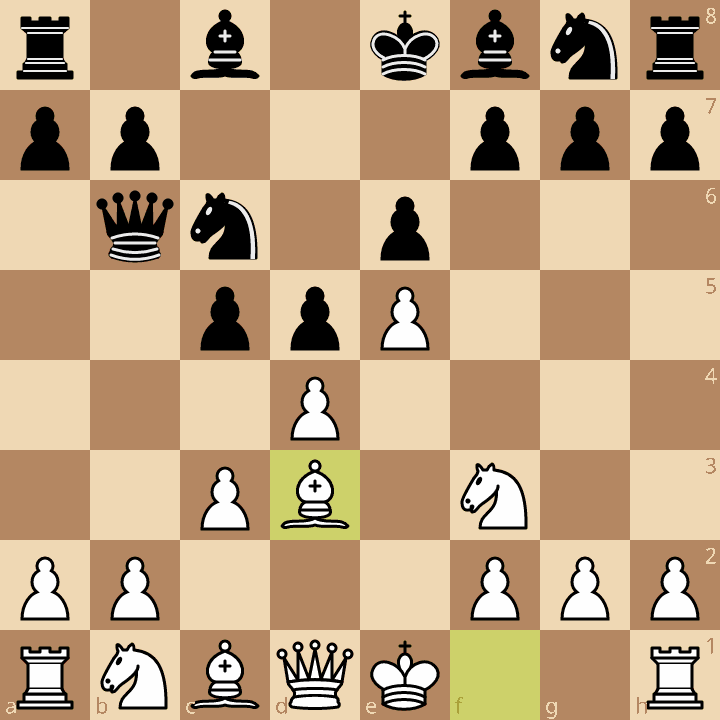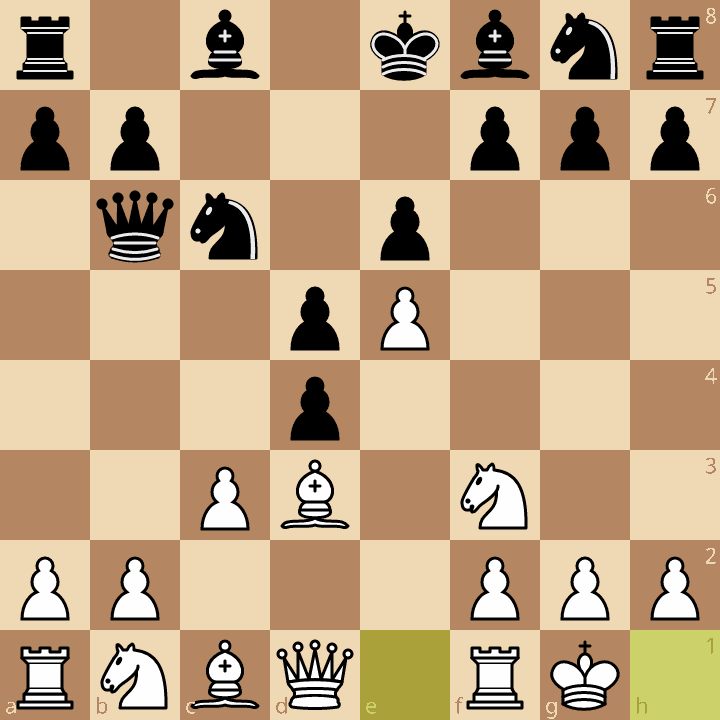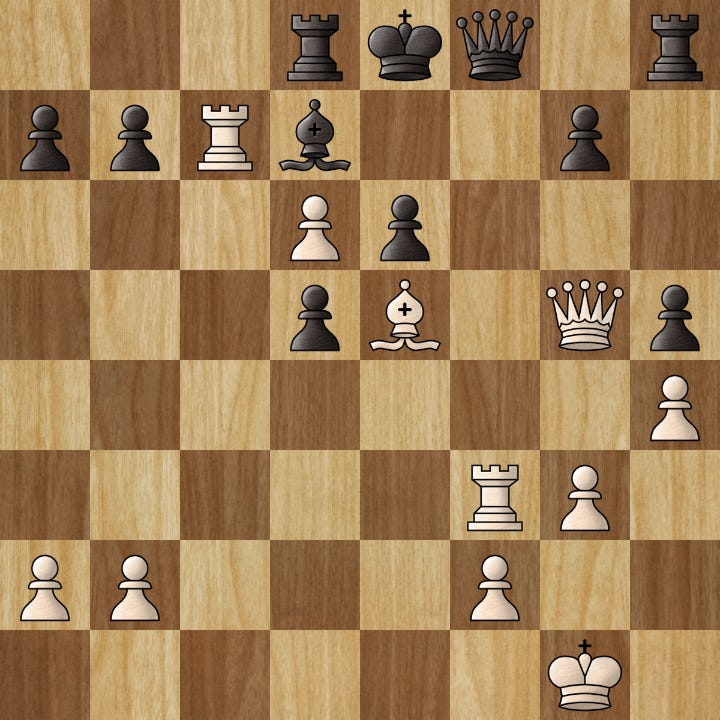Chessable Course Review: The Supercharged Milner-Barry Gambit by CM Hans Schut and Ben Devar
20 lines and all you need to play against the French Defense.
This is a review of a Chessable opening course called The Supercharged Milner-Barry Gambit.
What is the French Defense?
The French Defense, for one reason or another, is often the bane of the 1.e4 player’s existence. 1…e6 seems to take the fun out of the game, because it is so solid that White cannot blow open the center in the opening without losing their first-move advantage.
The symmetrical nature of the Exchange Variation (2.d4 d5 3.exd4 exd4) basically turns the game into a battle for a single tempo in an otherwise equal position, so it’s hard to say that White has any particular initiative. Possibly most condemning of all, both sides think this is boring, but imagine how badly some players have to feel about the French to deliberately go into a line that makes them fall asleep.
The Paulsen variation or “Main Line” (3.Nc3) can be a theoretical monster: Black has many viable options, including the Classical variation (3…Nf6), the sharp and imbalanced Winawer variation (3…Bb4), or the solid Rubinstein Variation (3…dxe4), all of which lead to different strategic considerations for White.
The Tarrasch Variation (3.Nd2) relies more on strategic understanding to maintain a solid edge, which may or may not fit the bill for the aggressive 1.e4 player.
The Advance Variation (3.e5) seizes a space advantage but invites an immediate counterattack against the weak d4 pawn with 3…c5. In a certain sense it seems Black already has the initiative here because of the natural moves Nc6 and Qb6, tying White down to the defense of the d4 pawn.
Sidelines offer equality at best: The Schlecter (3.Bd3) is one such idea. The Wing Gambit (2.Nf3 d5 3.e5 c5 4.b4!?) is another. And perhaps the most visually striking sideline is the Alekhine-Chatard Attack in the Classical line (4.Bg5 Be7 5.e5 Nfd7 6.h4!?).
Often, if things don’t go White’s way, Black is well on their way to wrest the initiative, what with their pawns bearing down so hard on the d4 pawn, so often players resignedly sigh and just remove the tension by defaulting to the Exchange French, considered one of the worst possible chess sins by many commentators.
How do you make penance?
The Supercharged Milner-Barry Gambit is a bite-sized course based on the French Defense: Advance Variation for White. The authors, CM Hans Schut and Ben Devar, recommend the Milner-Barry Gambit against the French, which occurs in the Advance Variation after the moves:
1.e4 e6 2.d4 d5 3.e5 c5 4.c3 Nc6 5.Nf3 Qb6 6.Bd3!?
What’s going on here? The d4 pawn has two defenders and three attackers — White has deliberately hung that pawn. The main line of the Advance usually goes 6.a3, where White will try to keep a small edge and maintain the tension and attack on the kingside. But here, Black has an opportunity to win the pawn with cxd4 immediately
Players who learned this opening a decade or more ago may know the trap: 6…cxd4 7.cxd4 Nxd4 8.Nxd4 Qxd4?? 9.Bb5+ and Black loses their queen.
So instead black often plays 6…Bd7?! or 6…cxd4! 7.cxd4!? Bd7!, preventing that plan and threatening to win the d4-pawn in earnest. This idea of immediately recapturing on d4 with 7.cxd4 on the seventh move is the normal way that the Milner-Barry Gambit is played. It’s also the most popular move in the Lichess database considering all ratings combined. But there’s another idea after 6…cxd4, which probably more properly belongs to Swedish GM Jonny Hector and it only becomes the most popular (by 1%) at the 2500 level on Lichess.
7.O-O!
White prepares Re1, and lets go of any conceit to get the pawn back. This is the core of the course. Sometimes called the Hector Gambit, or the “improved” Milner-Barry Gambit, White plans on holding the e5 pawn if possible, but focuses on development and initiative meanwhile baiting black to consolidate their central pawn majority (7…dxc3 8.Nxc3) to gain more time. The stability of the e5 pawn means that Black has to organize their pieces around it as it has a cramping effect on the f6 square. Because of this central stability, White often can build up a sizeable attack without worrying about getting busted in the center.
This line is not unknown, and the course regularly cites GM Gawain Jones’s Coffeehouse Repertoire book, which advocates for this idea as well. Also, my first experience with these lines was in the dodgy but entertaining Chessable course Grandmaster Gambits 1.e4 Part 1, where GM Simon Williams and IM Richard Palliser.
But I think the Supercharged Milner-Barry Gambit is the best offering of them all, at least on Chessable.
Why buy this course?
To start, the number of variations is very reasonable: 20 trainable lines. 10 are focused on 5…Qb6 (aka the “Hector” variation”), 5 on 5…Bd7 (aka the “Advance” variation”, and 5 on the sidelines 4…cxd4, 5…Nge7, 4…Ne7, and 4….Qb6 (aka. “Early deviations”). This is part and parcel of Hans Schut’s spiel: Short courses with just the core of ideas — learn fast, then get playing, the same approach he uses in Dubov’s Explosive Italian. The trainable content here is shorter than most of the Quickstarter chapters you’ll find in the average chessable course. To contrast, I own a few courses which cover the French and their line count is as follows:
Giri’s 1.e4 Part 2: 70 variations (Mainline Advance Variation)
Gajewski’s 1.e4 Part 2: 317 variations (3.Nc3)
Grandmaster Gambits 1.e4 Part 1: 99 variations (Milner-Barry Gambit)
French Toast: How Harikrishna fries 1…e6: 416 variations (3.Nc3)
In other words, if you let it, the French Defense can take over your entire chess study schedule.
Schut’s conceptual method of teaching the opening means that you don’t get bogged down in studying a bunch of lines that you’re likely not to face, and if you do run into them, you’ll know the position so well anyway that you don’t need to memorize any other side lines.
The course begins with a very helpful introduction chapter, focusing on the two main variations (The Hector and the Advance), and then gives a quick explanation of the ideas behind the French Advance pawn structure. These informational sections are very helpful for getting you up to speed on how to think about the Advance French positions you’ll encounter as White.
Though the course contains only 20 lines to learn, it’s still sensitive to the time invested in studying its lines, so at the beginning of each variation (and this is one of my favorite features about Hans Schut’s courses!) you get a little statistical blurb that discusses just how much you should expect to see that variation:
If you don’t have time, only study the variations marked as of High importance.
Each of the variations is highly annotated, and contain a lot of clickables which discuss when Black plays a move that is thematic but mistaken (for instance, 6.Bd3 f6?!). At the end of many of the analyses, he leaves us with a Stockfish evaluation to give you an idea of how much better White is.
Some of the clickable variations show up in the tactics chapter, so this helps reinforce those lines. I like this idea and wish that more Chessable courses employed them. Clickables are great, but they aren’t usually trainable, and therefore are liable to being forgotten about. If you cover those lines again using a tactics chapter, this increases retention of the important refutations contained in the analysis. To me this is a no-brainer way for courses to become even better at the cost of little extra work.
How does it work for me?
The reason I enjoy the Milner-Barry Gambit so much is because of the lasting initiative that White gets in the main line, which is by far the most popular variation played, at least at my level. Since purchasing this course and using it the last six months, after 6.Bd3, my results are 78.9% with White. 15 wins, 4 losses. To put those numbers into more perspective, every single loss that I faced occurred after Black played a very non-theoretical move in the opening, thus taking me out of my preparation and leaving me to rely on my own wits. Even then, those losses weren’t due to opening theory problems — I usually got a good position in the opening and then simply got outplayed in a middlegame or endgame. I was never led off-track by the course.
And the pleasure of the victories far outweigh the pain of the losses:


A lot of times, the attack that White can build up is so enduring that Black’s king is trapped in the center of the board. This often isn’t a problem in normal French games, where the closed nature of the center means that castling isn’t top priority and sometimes due to White’s space advantage on the kingside it’s best not to shut the king in where the enemy pieces point, but it can be dangerous against the Milner-Barry Gambit, leading to positions that look like this:
Or this:
Sometimes, White can simply invest their dynamic advantage into a material one and head into an endgame as well:
Most of these examples from my play are blitz games, but this can be played in rapid and classical time controls as well. Here’s a game I played after first writing this review. It was a rapid time control (15+10) against an 1800+ rated player on chess.com. I particularly enjoy that despite the one-pawn minus for virtually the entire game, White was the one having all the fun:
The course also offers a short but helpful and thematic Tactics chapter, and a Model games section which contains usefully annotated games featuring master-level examples of how to play these positions. Among its exponents, we see MVL, Carissa Yip (twice featured!), and Magnus Carlsen. It’s not a pushover — this is a real opening you can use. It’s not quite as respected as the mainline Advance with 6.a3, but it is still a strong and practical weapon, especially if you are a club-level player like me.
So, if you hate the French and want to beat it to a pulp, and you enjoy dynamically imbalanced positions where you’re down a pawn but up in piece activity, you should very seriously consider purchasing this course, since it will be playing to your strengths. It’s only $8 when it’s not on sale — when on sale it usually runs for $5, which is a substantial steal.























